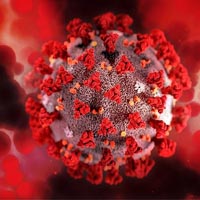 Smart Citations
Smart CitationsSee how this article has been cited at scite.ai
scite shows how a scientific paper has been cited by providing the context of the citation, a classification describing whether it supports, mentions, or contrasts the cited claim, and a label indicating in which section the citation was made.
Computed tomography severity scoring of COVID 19 infected young patients: Is the second wave affecting the young lungs more than the first wave in India?
We evaluated the High Resolution Computed Tomography (HRCT) findings in young patients (< 40 years) infected with the COVID 19 virus and tried to find out any difference in the severity of lung involvement between the first and second wave of the pandemic and whether the notion of young population being more severely affected by the second wave holds true.Two-hundred (200) young patients (<40 years) with RT PCR documented COVID infections undergoing HRCT chest at our institute were included. Group A included young patients infected in the first wave (up to 28 February 2021) while Group B included patients beyond this date. Demographic and clinical data was obtained from the medical records department. HRCT scans were retrieved from the archive and were assessed by two radiologists or CT severity scoring. The mean severity scores were calculated and any statistical difference between Group A and B was sought. CT scans of four fully vaccinated patients were also evaluated.The age and gender distribution among the two groups was comparable. A greater number of patients in group B required hospital admission compared to group A (74% VS 53%). In group A, the mean severity score was 10.1±2.1 with 34 patients (34%) in mild category, 46 patients (46%) in moderate group and 20 patients (20%) in the severe group. In group B, the mean CT severity score was 12.6±2.3 with 20 patients (20%) in mild category, 42 patients (42%) in moderate group and 38 patients (38%) in the severe group.Lung involvement in young patients in the second wave is more severe requiring more hospital admissions. Vaccinated population may well have a milder form of the disease.

 https://doi.org/10.4081/hls.2021.10056
https://doi.org/10.4081/hls.2021.10056




